Vehicle tyre checks
CHECKS
General recommendations
Any perforations, cuts or visible distortion of the tread, sidewalls or bead area must be checked by a tyre professional to assess if the tyre can continue to be used, need to be repaired or is irreparable.
Any damage to the rim must also be checked by an appropriate expert.
Never put back into service any tyres:
with visible damage, such as a deformed bead, rubber or ply separation, visible bead wire or bracing plies, damage from hydrocarbons or corrosive materials, marbling or abrasion of the interior rubber resulting from running at low pressure.
when there is any doubt about their condition or suitability for service.
which do not comply with legal requirements, for example tread depth below tread wear indicator (TWI).
Each time the vehicle is inspected, check that the valve cap and its rubber seal are in good condition. If in doubt, replace the cap with a new one.
Checking for wear
Checking for wear must always be carried out at several points across and around the tyre.
This check can be carried out using a tyre tread depth gauge or by referencing against the tread wear indicators in the tread grooves. The tread wear indicators (TWI) are located in the main grooves in line with the TWI symbols in the tyre shoulder area.
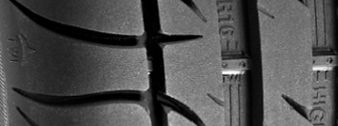
TWI marking on the shoulder area indicates the position of the Tread Wear Indicator in the groove of the tread pattern.

In precedent tyre lines, the TWI marking was a triangle.
If the legal limit for wear has been reached, the tyre must be removed and replaced.
We recommend you to consult with a tyre professional if there is abnormal wear or a difference in wear between two tyres on the same axle.
Tyre inflation pressure
Given that a tyre slowly loses inflation pressure naturally, it is necessary to adjust it quarterly; this check can also enable any abnormal loss of pressure to be detected.
This check must be carried out on all the vehicle’s tyres (including the spare when there is one).
Under-inflation
The use of a vehicle that has tyres with insufficient inflation pressure could lead to an abnormal increase in their operational temperature and may cause damage to internal components. This damage is irreversible and may lead to a sudden rapid deflation of the tyre. The consequences of running with insufficient tyre inflation pressure are not necessarily immediate or visible, and may appear even after the tyre pressure has been corrected. Insufficient tyre inflation pressure also strongly increases the risk of aquaplaning.
Over-inflation
Over-inflation can result in increased susceptibility to impacts (e.g. tread damage).
Over-inflation or under-inflation can cause rapid and irregular wear.
It is recommended that tyre pressures are checked when tyres are cold.
If the check is carried out after driving and the tyres are warm, the tyres should not be deflated as inflation pressure increases with temperature. In case of warm tyres, we recommend to adjust the pressures using a pressure of 0.3 bar higher than the cold pressures recommended by the vehicle manufacturer
Inflation with nitrogen is not an exemption from the need to check tyre pressure regularly.
In all circumstances, keep the pressure level recommended by the vehicle manufacturer or alternatively by the tyre manufacturer.
REPAIR
Tyre damage often cannot be repaired.
All tyres must be inspected and repair carried out by a trained and qualified tyre professional.
In order to check if a tyre that has been run underinflated or flat and may have suffered irreversible damage, the tyre shall be removed from the wheel. It should be inspected to define the type of repair required.
Key points
Tyres with the following visible signs cannot be repaired:
Bead wire visible;
Steel belts separated or visible;
Sidewall worn out due to run flat and sidewall touching the road;
Obvious signs of under-inflation or run flat (visible from inside).
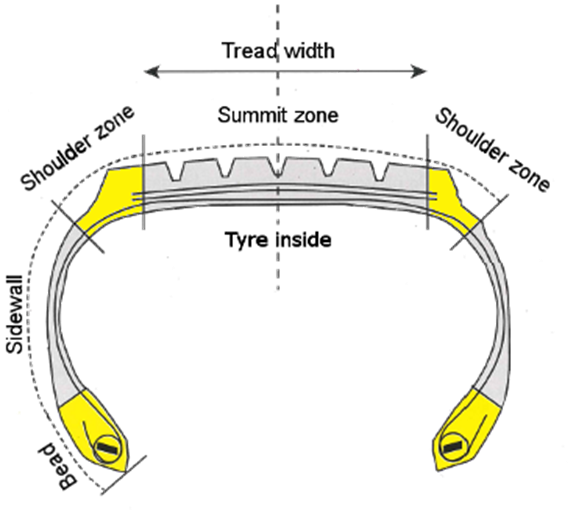
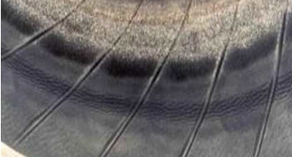
The inner liner is showing cracks due to run flat.
This is an irreversible damage, the tyre cannot be put back in service.
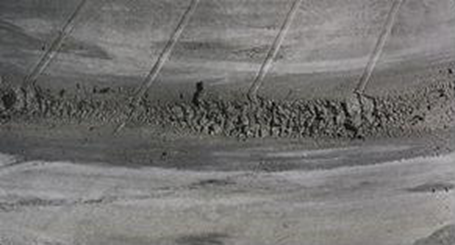
Presence of powder:
The inner liner has been destroyed, it is likely that the body ply has also been damaged; thus, the tyre cannot be put back in service.
Tyre repair basics
The professional repairing the tyre is responsible for
the inside examination to ensure that there are no inside damages.
the quality of the repair (ensure air tightness and full obturation of the hole).
The professional has to evaluate properly if the tyre could be repaired
without any risk related to potentially existing irreversible damages due to run flat (can only be checked from the inside).
whether the location of the damage is in the repairable zone (see below).
Summit zone can be repaired if the hole ≤ 6mm.
We do not recommend repairs in the shoulder zone
Sidewall zone can be repaired if the hole ≤ 3mm.
Bead zone cannot be repaired.
Repair material
For tubeless passenger or light truck tyres, the use of Mushroom type repair patches (cold repair) is highly recommended.
Repair with plug are also acceptable provided that tyre have been dismounted and analysed for potential run flat damages.
These two type of repair ensure the full obturation of the hole and then limit the risk of further corrosion of steel belts.
Simple patches are not recommended, they must be avoided because of potential corrosion of the belts.
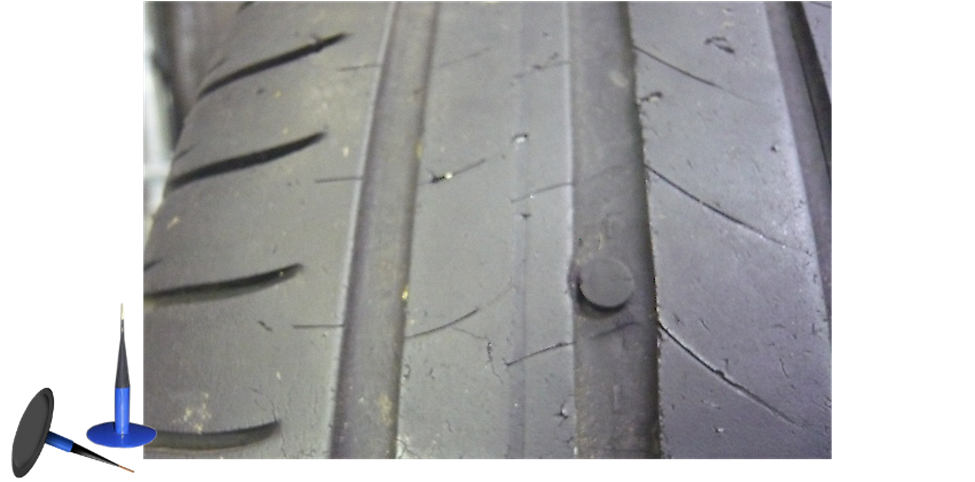
Mushroom type patches are recommended.
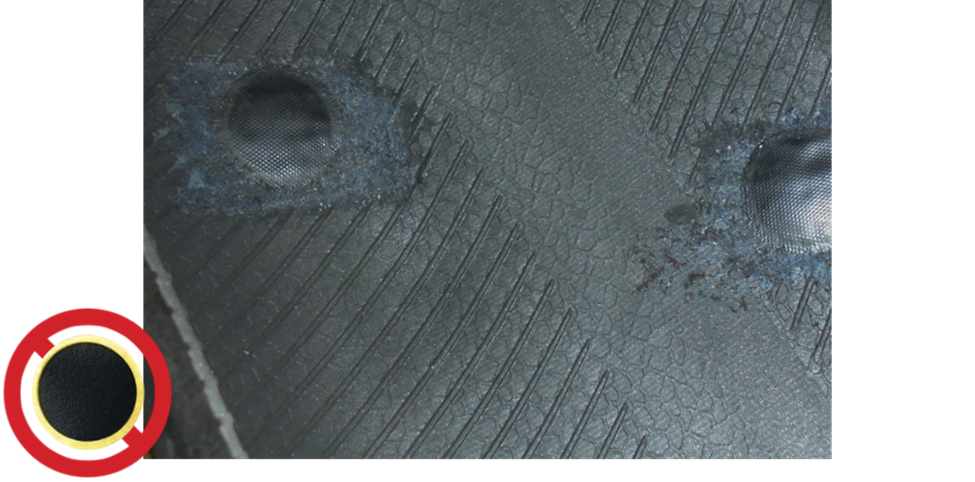
Simple patches are not recommended.
Use of sealing products
In the event of a puncture, injection through the valve of sealing products (instant puncture sealant, etc.) can only be a partial and temporary solution. These chemical products can cause technical problems with the tyre, wheel, valve, pressure sensor, etc. It is essential to follow the sealing products manufacturer’s recommendations.
We recommend you to go to a tyre specialist to closely check the tyre, repair it properly or replace it if needed.
